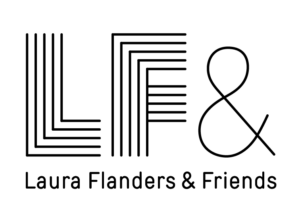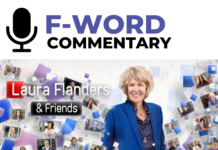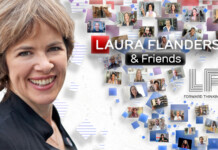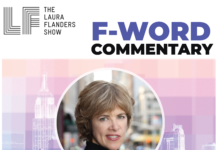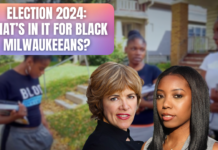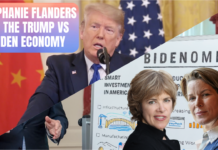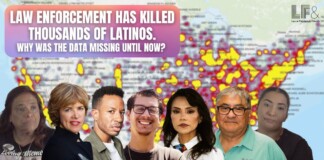About
What is a city’s economy for? New York City’s economy has been very good at piling up private wealth and building tall buildings but it’s done less well, especially recently, when it comes to maintaining public services and public trust. In this episode, Laura attends an historic gathering at the School for Labor and Urban Studies at the City University of New York (CUNY) and talks with the city’s Deputy Mayor Phillip Thompson among others, about the way a city like New York might change its economic model going forward, in a way that would share wealth – and power – more democratically, as the city tackles climate change and a public health crisis. This episode also features a report on Cooperative Home Care Associates, the largest worker-owned cooperative in the US, based in the Bronx.
“The idea that the private economy will take care of everyone’s prosperity and all you have to do is leave it alone is a myth. And what we’re really saying is, local government has to step up and we actually have to plan and ensure that our dollars, our public dollars are being used in the best possible way for the residents of this city.”
— J. Phillip Thompson, New York City, Deputy Mayor for Strategic Policy Initiatives
In This Episode
- J. Phillip Thompson, NY Deputy Mayor for Strategic Policy Initiatives
- Roger Green, Executive Director of the Dubois Bunche Center for Public Policy
- Adria Powell, President and CEO of Cooperative Home Care Associates
- Gladys Drew, Worker-Owner of Cooperative Home Care Associates
- Shaywaal Amin, Vice President of 1199SEIU United Healthcare Workers East
- Rebecca Lurie, Coordinator of Community and Worker Ownership Project
- Sean Sweeney, CUNY School of Labor and Urban Studies
- Lynn Benander, President of Co-op Power
- Cole Carothers & Shilpa Nandwani, Co-founders of Khao’Na Kitchen
- Sheila R. Foster, Professor of Law and Public Policy at Georgetown University
Where to Watch
You can watch this episode on your local WORLD channel at 11:30 am ET on Sunday, October 11, or on your local PBS station.
Click here to search all airing times near you.
Or
Click here to watch online on YouTube. The episode will be made available at 11:30 am ET on Sunday, October 18.
Listen
Transcript
– We have an issue of structural economic inequality that exists that we haven’t addressed.
– And only a real extension of public ownership and democratic control can achieve those objectives.
– Thinking of the city as a commons is a way to acknowledge that the city is generative.
– So when I’m asked, why do we need economic democracy? My short answer is that we needed it hold on to democracy.
– That’s all coming up on the Laura Flanders Show, the place where the people who say “It can’t be done,” take a back seat to the people who are doing it. Our city’s economy: What is it for? New York’s has been very good at piling up profits and building tall buildings, but all that private profit has come at a cost to public services and public trust. Could it be different? Interest in the question of the economy is growing, as evidenced by an oversubscribed conference held at the City University of New York’s College of Labor and Urban Studies.
– We’ve begun in the de Blasio administration constructing prototypes for how to build economic democracy. And the important thing is the, we all work together and learn together. I’m not saying we figured everything out. No, we have not. We’ve just started.
– New York City faces the serious challenges of any major city. Specifically when it comes to inequality and climate risk. But with democratic majorities at both the city and state level in government, addressing those challenges is more possible now than it’s been in decades. And some real experts are at the table. Notably J. Phillip Thompson, the city’s deputy mayor for strategic policy initiatives, who comes to the job with years of experience as a scholar and coalition builder and urban planner.
– For all of us wanting economic democracy, honest dialogue and deep unity across race and geography, we need to have a rough level of equality and resources and capacity.
– What’s distinctive about New York City and its capacity to advance economic democracy?
– Well, New York has always been a leader in innovation, but also in people’s movements. The reason we had created the City University of New York, which until the 1970s was free, was because of immigrant movements fought for that in the 1930s and won it. The reason we have the largest public hospital system in the country is because people fought for that and instituted it. The reason why we have public housing was originated in New York and the Lower East Side because people fought against slum housing. And these programs created the great middle class that America takes great pride in, but it actually came from these kinds of initiatives and these kinds of struggles.
– What do you lift up as the economic democracy initiatives that you’re most proud of here in the city so far?
– Well, we are struggling with this, but one of the things that we’re working on is actually using the institutions that I mentioned as anchor institutions. The hospitals alone in New York spend 12 billion a year buying goods and services. Why can’t we use some of that 12 billion spent to build firms that are democratically run and controlled that have the welfare of the community and their workforce as a priority, companies that actually have a civic core to them, why can’t we build those kinds of companies? ‘Cause around the world, there are plenty of examples. The idea that the private economy will take care of everyone’s prosperity and all you have to do is leave it alone is a myth. And what we’re really saying is local government has to step up, and we actually have to plan and ensure that our dollars, our public dollars, are being used in the best possible way for the residents of this city. And that means building companies that are responsive to the people of this city.
– One of the many ways people are approaching economic democracy is through the city’s healthcare budget.
– A group of advocates organized to approach the state legislature, myself included, as I was serving as the chair of the committee on children and families to create a new institution in Brooklyn, which we did. A children’s psychiatric hospital built at a cost of about $54 million, state of the art institution. Just incredible space, and the medical director turns to me and he says, “Well, there’s one problem. “The children, they don’t want to go home,” and that was my epiphany. We have an issue of structural economic inequality that exists that we haven’t addressed.
– We spoke to former New York State Assembly member Roger Green about his vision for transforming this, the largest sector of New York’s economy. Let’s talk macro to begin. Where do you see the connections between the economy and healthcare?
– Well in New York City and New York State, healthcare is the largest sector, and so what we’re looking at is the anchor institutions, particularly in Brooklyn, being leveraged to address the structural economic inequality that has plagued central Brooklyn for some time. Huge contracts are given to major corporations, bypassing the local economy, which is struggling with wage insecurity, asset depression, population displacement, and all of that could be addressed, if in fact the healthcare institutions themselves started to redirect their contracts back to the local economy. By redirecting those contracts back to enterprises that are organized as in a democratic way, with workforce democracy, unionized worker co-ops, we address two things. Number one, we provide a living wage, but also a broad based profit sharing. Third thing it would do is it enhances the civic infrastructure of a community by having people within those enterprises actively engaged in the practice of democracy. We think that’s important also.
– We have a silver tsunami coming in New York, where one in five New Yorkers will be elderly in need of home care. Home care workers right now are paid minimum wage, they’re poorly trained. They don’t know how to keep people out of hospitals ’cause they’re not trained to do that. So one of the initiatives we have as a city right now is a working group on longterm care. And we are really trying to model how do we bring together home care providers, unions, community groups, together to say, how do we create a longterm care system that works better for workers, better for patients, it saves government money by keeping people out of emergency rooms and can be transformative. And for us that is modeling economic democracy.
– One route to economic democracy is through worker ownership. And New York is home to the largest workaround co-op in the country: Cooperative Home Care Associates in the Bronx.
– We do the hardest work, but we don’t get paid for what we do. It took a while for us to get at least $15 an hour when I feel that we deserve more. ‘Cause in reality, we’re there more than the family, we’re there more than the nurses. This is not for everybody. A lot of us take the training, but we don’t make it. We go to a client’s home, we see what it’s all about, and it’s like, “Oh no, this is not for me.” Taking care of somebody that you don’t even know they may even speak to you not correctly. They think that you’re a maid, they think that you’re there, they think that they’re the one that pays you. I think everyone should be a worker’s owner because it’s a lot to go with the check. It’s a lot of perks. You can actually say, “I own one piece of Cooperative Home Care,” cause, remember, home care, the pay is low. So any type of dividend or any type of extra money that you get, it’s a blessing.
– So Cooperative Home Care Associates is a worker-owned cooperative, which means that anyone who works for the cooperative can also be an owner, but you’re not required to be an owner. Being a worker-owned cooperative is one part of our model. I think in general, having a culture around participatory management and an open door policy where we want workers to come in and express what’s going on for them in their jobs, in their communities, is also part of this equation, and respecting and valuing the workforce and understanding that we need to invest in the workforce for them to have quality jobs so that they can go out and provide the kind of care that some of New York’s most vulnerable populations need. We have over 2100 home care workers, and cooperative home care is the largest worker-owned cooperative in the United States.
– Some trade unions are thinking about worker ownership too, like 1199 the healthcare workers. Shaywaal Amin is a vice president in the union who works with nursing home workers. Transitioning to worker ownership is not an easy move for a trade union. What are some of the obstacles?
– We need healthcare, all of us. And so what would be best for me would be best for you. And so if you can have someone that can translate, listen, I know that we can give you the best assistance, the best health care with the monies that we have, I think that’s the best way to go. And the worker would know what’s the best way to do it, I believe.
– Now how does your work with nursing home workers intersect with this conversation about economic democracy?
– Well, In the reality of the workplaces that they are, it’s mostly women, immigrants and low paying jobs, and how we see ourselves changing is having more of a voice in the workplace. And, in healthcare in particular, the issue becomes the tax payers’ dollars. And we wanna have a say in what the monies that are shared with the taxpayers in our workplace, in the nursing homes, in the centers, in the clinics, that we wanna have a say of what the profitability, where it should be distributed, how it should be distributed.
– So how is that working for you with users, workers, consumers, residents, politicians, researchers all at the table?
– The challenges are in our face, but I believe we have the expertise. And as big as an organization as 1199, I believe we can iron out the issues as collective bargaining becomes more and more stringent in terms of the percentages of gross payroll, as technology becomes a part of the workforce, as the issue that we have an aging workforce, we need to figure out a different dynamic of capturing capital for our members. And so unionized co-ops is a way, is another tool if you will of capturing that.
– Under Mayor Bill de Blasio, New York approved a $14 billion plan to attack global warming and combat climate change. A plan that’s being called the city’s own Green New Deal.
– Targets of the Green New Deal were a hundred percent renewable energy within 10 years, which in the terms of energy policy, that’s like a blink of an eye. That’s not an easy thing to do. The second is that all emissions would be removed from transport within 10 years. Now, you only have to look at this for a few moments to realize what an enormous challenge that is from a technical angle. It doesn’t matter who owns it, it’s an enormous challenge. But if it’s left to investor wins and scruples, essentially, we have no chance. Even with full economic democracy and public participation, that will be a difficult task. But that is our task, it’s our historical opportunity, and it’s our responsibility to rise to that task.
– You have a major investment about to be made in the name of the city around the Green New Deal. How will you, how are you in the administration working to ensure that the benefits of that investment are equitably distributed?
– Almost a quarter of the city’s energy is gonna close in about three years. We have to reduce consumption as well as expand new ways of generating energy, renewable energy. And so that means we’re gonna have to have a retrofitting program for buildings to reduce energy consumption. We have 900,000 buildings in New York that need to be retrofitted ultimately. So we’re talking about jobs for a generation. So one of the things we’re working on are ensuring that our most at risk young people, people live in public housing, people in low income communities, actually get the training that they need so they can be the next generation of green architects, green carpenters, green engineers, green laborers, HVAC workers, et cetera. That’s one. The other thing is, we can have micro grids that produce energy on a local basis that are community-owned.
– The question of community ownership is being raised right now around a 95 acre site that holds the Brooklyn Navy Yard. One of the community groups, UPROSE, is calling for the whole thing to be an energy co-op to benefit community members.
– My name is Lynn Bernender, and I am the precedent of Co-op Power and also the fund manager for the People Solar Energy Fund. I get to talk to people about what their dreams and hopes are for how they want energy to happen in their community. What green jobs they want, what kind of investments they want to be making, what assets they wanna own together. I am so excited to be working with leadership here in the city of New York, because they’re already doing things in a different way. They put out a request for proposals to put solar on the Brooklyn Army Terminal roof. It said, we want the power to go to low income people in this community, and we’re willing to reduce the lease payment if you’ll give more of a discount to low income community members. And we want UPROSE to end up with some ownership of this project in the end.
– So you’re talking about power, energy, electricity and power decision making?
– Yeah. And the power that comes from owning assets in a space.
– So co-ops, I mean a lot of people associate the word co-op with their local cafe. are co-ops really able to deal with energy production and electricity and solar power?
– Absolutely. So 75% of the landmass in the United States is served by electric cooperatives. Because when Roosevelt was president, he looked around and said, oh my goodness, this electricity is really changing how people can engage in their communities, but economically, and we can’t leave rural America behind. Within 50 years, the entire rural America was electrified, and that’s all by building cooperatives.
– Rebecca Lurie was one of the organizers of the Our Economy conference at CUNY.
– I think that with the hardship that we’re all facing, every once in a while there’s hope and compassion that gets breathed into the solution. And that’s happening in different places. One of the things you see about cooperative economics around the globe and historically is people study together, and then they start a business. Or they start a business, and they study together. So we want to give them more content to study with. We are putting together Azine along with the Bronx Co-op Development Initiative. And so there’ll be something from every workshop that’ll be written up by a student or community activist so there’s a way to bring this into the classroom. Folks are studying this, people are writing about it, but when I say “it,” it’s plural, there are a lot of different ways to go into it.
– Worker co-ops come in all shapes and sizes, not to mention flavors. Khao’na Kitchen catered this Our Economy conference. We went to look at the backstory to this worker-owned cooperative kitchen based in Brooklyn, New York.
– Khao’na in Punjabi means to feast now, and Khao’na in Visayan, which is a dialect the Philippines, means to eat now. So that is just an example of how our worker co-op fuses both of our cultures together. One thing that we do is take these traditional meals and make them a little bit healthier without losing the history or the fun or the kind of attachment that someone might have with a dish.
– And we do that because when you go throughout the United States, or even throughout the world, our communities, the Filipino Indian communities, often live right next to each other. And in history, our communities have had a lot of interaction. And so we’re bringing that story and those flavors together side by side, because it also tastes really good together. I think more and more, under the leadership that we’re in in the United States, and even across the world, we’re seeing heightened sense of repression against people who are working, who are going out there, sacrificing their health, and they’re trying to make a living in order to feed their families and then ultimately feed the nation.
– And so for us, being able to bring a whole new alternative of what economy can look like through worker cooperatives is really important because we see that the people who are making the decisions on where the profits go, who we cater to, for example, are they aligned with our mission and values are really important, and we will always put people and our community before profits. We’re having this conference talking about economy, talking about where money is going, where the government allocates money, and knowing that almost $200 million every year is spent on a different nation’s military and police that has in the past two years killed 27,000 Filipinos, that is part of our conversation. There are so many other places that this money can go, and worker cooperatives is one of those, creating solidarity economics is one of those, education is one of those, healthcare is another one. And so when we go to talk to our representatives who are supposed to be representing us, we are going as grassroots organizers, we are going as worker-owners, we are going as people who are looking at the global effects of imperialism and of capitalism, and we know that just between the two of us doing this thing, that’s not enough. So how many people can we reach? How many people can we convince and influence that these things are all connected and that we are stronger together? That is where our worker cooperative can go and is going.
– And we’re not just trying to be another catering cooperative. We’re trying to be part of a larger movement.
– Capitalism has always piled up profits. The question is, what do they do with them? Industrialists in the 19th century and others invested in things like this, a public library to share some public goods for the benefit of everyone. What’s happened to that concept? It’s feeling increasingly relevant, but public goods and space and resources are increasingly scarce. Professor Sheila Foster at Georgetown Law is advancing the idea of something she calls a co-city.
– If we think about the commons, we think about the natural environment, our God-given world, the lakes, the trees, the hills, the oceans, et cetera. That’s our traditional concept of the commons. It’s something that we all own in common and that the government holds it in trust for us. But when you come into a city, you see that the city is a highly privatized landscape, right? Although it used to be a common, let’s say just land, people came on and they pop their houses down, they pop their businesses and they brought things up. So how do you bring the concept of we all own something, this is all of ours, to a place that’s highly privatized? So we see land trusts popping up in cities like New York City, like London, all over the world really. And the other example I would give here in New York City is I’m involved in a project in Harlem where we’re trying to create a broadband network using, again, the infrastructure of the city, connecting into that, creating a new technology that allows a dis-aggregated network to put the internet in people’s hands at an affordable price in public housing and in other buildings in Harlem.
– Libraries in a sense were the 19th century innovation to try to expand education commons outside of private ownership. Libraries today, we have a great one right here in New York, perhaps are a symbol of an effort from that century. What do you think a 100 years from now might be the symbol of what we’re doing today?
– It’s a really good question. What is the innovation? I actually think it may not be a place, but a sense of how we operate as a society, more collaboratively. The one thing that’s happening in the world is that cities are getting too big, right? And the communities are too diverse. They’re becoming complex ecosystems. What that means is that it is, and we are seeing this, very difficult to meet the needs of different kinds of communities with a central decision maker. Particularly when that central decision maker has its own pressures from special interests, and they’re not always operating in the public interest. So I think what this pushes towards in the innovation of the 21st century that will last as to think in a more decentralized way. Resources and decision services and goods won’t just come from a central place, but rather they’ll be distributed.
– Is that the co-city that you’re talking about?
– That is the co-city. The co-city is a co-created, co-produced, co-governed city. And if you think about the innovation of participatory budgeting, so it’s already happening where it used to be you had one budget and the city decided who got what, now the city’s saying, we’re gonna decentralize it, we’re gonna give, we’re gonna set aside a million or millions of dollars and let these communities decide for themselves.
– Is New York alone? Is this initiative U.S. only? No, it’s not U.S. only. So think about participatory budgeting. It started in Brazil, and now it’s in cities all over the world. We’re labeling it to say that, look at what’s happening, and how do we scale this up? This is a model that we can think about governing and managing in a much more democratic, much more socially just way the resources that are ours. The commons.
– I reject the idea that labor quote unquote sees the workplace as the primary place, because labor doesn’t only consist of unions. I would say that one version of labor thinks that workplaces are where all the action is, but I would argue that folks who’ve been fighting, and civil rights folks who’ve been fighting in the women’s movement, they’re also dealing with labor issues. And part of the problem in America has been the narrow frame that labor unions have taken, which have actually weakened it. So I think in order to really build a strong labor movement, the labor movement has to encompass women, it has to encompass people of color, it has to change its identity and its narrative.
– So what does that look like here in New York City as you advance this economic democracy agenda?
– Well in New York City, I think it means getting labor unions and community groups together to come up with common plans for things like, how we do business as a city? What kind of companies get contracts? How do we address the affordable housing crisis? Can labor bring in some of their pension funds? Is there a participatory process? So that members of unions and members of communities can work with the city and others to say, here’s how we want to see those dollars utilized, cause it’s the people’s money.
– And I described cooperative economics as two things. Two things are required: transparency with the resources, whatever they may be, and democratic decision making. How do we really show up together? Well, if you have years of oppression and exploitation and suffering, you can’t show up all that well. So we have to heal each other so we can show up. And that becomes part of democratic processes, is helping each other with our trauma. ♪ So give back ♪ ♪ Give back my dignity ♪ ♪ Took it back ♪ ♪ Took back my humanity ♪
– That’s it for this time. Thank you to all of you who are part of our economy. You make this show possible. Thanks. For more on this episode and other forward thinking content, and to tune into our podcast, visit our website at LauraFlanders.org, and follow us on social media @TheLFshow
Want to Learn More?
Get the episode notes and behind the scenes info by joining us on Patreon.
And check out more episodes on creating a cooperative economy here.
Accessibility
The Laura Flanders Show is committed to making our programming, website and social media as accessible as possible to everyone, including those with visual, hearing, cognitive and motor impairments. We’re constantly working towards improving the accessibility of our content to ensure we provide equal access to all. If you would like to request accessibility-related assistance, report any accessibility problems, or request any information in accessible alternative formats, please contact us.
